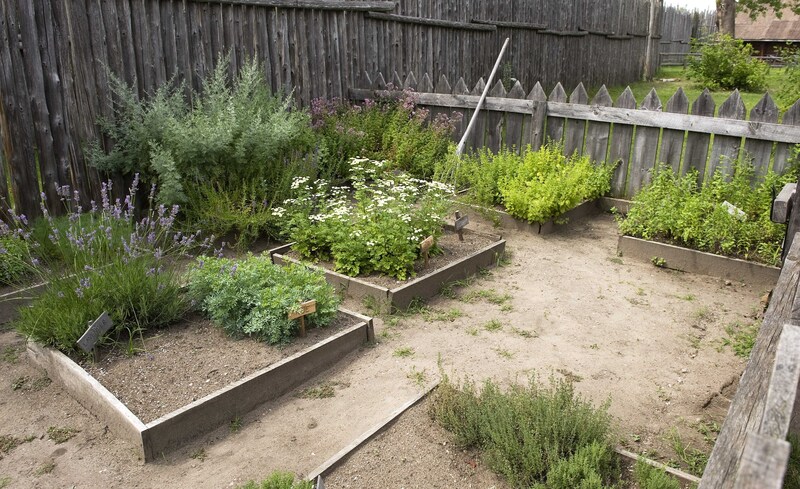Vertical gardening: a fresh perspective on space-saving
Posted on 21/08/2025
Vertical Gardening: A Fresh Perspective on Space-Saving
Gardening enthusiasts are always looking for innovative methods to bring greenery into their lives, even when space is at a premium. Vertical gardening offers an exciting and efficient solution, transforming unused walls, fences, and small urban corners into vibrant, lush mini-ecosystems. This comprehensive guide unveils the multifaceted world of vertical gardens, demonstrating how you can maximize limited areas without sacrificing the joy and rewards of plant cultivation.
The Evolution of Vertical Gardening
From ancient civilizations to modern metropolises, the concept of gardening vertically has evolved dramatically. While the Hanging Gardens of Babylon remain a legendary example, today's space-saving garden designs integrate innovative materials, advanced irrigation, and creative layout strategies. Vertical gardens were once limited to professional landscaping or large public spaces, but now anyone can embrace this sustainable gardening approach and reap its numerous benefits.

Understanding the Vertical Gardening Concept
Vertical gardening, sometimes called living walls or green walls, refers to growing plants upward rather than outward. Instead of sprawling across the ground, plants ascend along walls, trellises, or specially designed systems. This enables you to grow a wide array of flora in places previously considered too cramped for conventional gardening.
- Green walls: Entire wall systems covered in lush plant life.
- Trellised gardens: Utilizing vertical supports for climbing plants.
- Pocket planters: Modular pockets or containers attached to walls or fences.
- Stacked planters: Tower-like containers, allowing multiple layers of growth.
- Hydroponic vertical gardens: Soil-free, nutrient-rich systems supporting upright growth.
Why Choose Vertical Gardening?
Urbanization has led to shrinking living spaces and a growing desire to connect with nature. Vertical garden installations make it possible to cultivate edible, decorative, or air-purifying plants in apartments, balconies, patios, or commercial spaces -- any place where traditional soil beds are impossible. Let's dive into the primary advantages:
Efficient Space Utilization
- Maximize limited areas: Utilize underused vertical surfaces--walls, fences, railings, and balconies.
- Suitable for renters: Many vertical systems are portable and non-invasive, making them ideal for those with temporary residences.
- Expandable: Modular vertical garden kits allow you to scale your space-saving plant wall as your ambitions grow.
Enhanced Air Quality and Mental Well-being
- Natural air filters: Plants absorb carbon dioxide and produce oxygen, while some species remove indoor toxins.
- Biophilia: Connecting with plants boosts mood, reduces stress, and promotes a sense of well-being.
Aesthetic Appeal and Privacy
- Stunning green backdrops: Instantly revitalize bland walls, patios, or office interiors with greenery.
- Improved privacy: Vertical gardens can act as elegant screens or natural dividers.
Improved Microclimate and Insulation
- Temperature regulation: Living green walls can buffer temperature extremes, reducing energy consumption.
- Sound insulation: Foliage absorbs sound, making for quieter, more peaceful spaces.
Best Plants for Vertical Garden Systems
Selecting the right plants is crucial for a thriving vertical garden. Consider your local climate, light levels, maintenance needs, and the purpose of your space-saving garden.
Edible Plants for Vertical Gardening
- Herbs: Basil, mint, oregano, thyme, parsley, chives, and cilantro are ideal as they're compact and thrive in containers.
- Leafy greens: Lettuce, spinach, kale, and arugula grow quickly and can be harvested regularly.
- Climbing vegetables: Peas, beans, and small cucumbers flourish when grown up trellises.
- Compact fruiting plants: Strawberries, cherry tomatoes, and dwarf peppers are well-suited for vertical setups.
Ornamental and Air-Purifying Plants
- Succulents: Low-maintenance and diverse, succulents like sedum and echeveria create striking, drought-resistant walls.
- Ferns: Boston or maidenhair ferns bring texture and thrive in shaded moist areas.
- Vining plants: Pothos, philodendrons, and ivy easily cascade or climb in vertical structures.
- Flowering varieties: Petunias, begonias, and impatiens add color and vibrance.
- Air-purifying plants: Spider plants, snake plants, and peace lilies clean air while beautifying your vertical space.
How to Start a Vertical Garden: Step-by-Step Guide
Embarking on your vertical gardening journey is both exciting and rewarding. Whether you're a seasoned gardener or a curious beginner, following these steps ensures a successful transformation of any small space.
1. Choose a Suitable Location
- Assess available walls, fences, or balcony railings.
- Ensure the area receives adequate sunlight for your chosen plants.
- Consider proximity to a water source for easy irrigation.
2. Select the Right Vertical Gardening System
- Wall planters and pockets: Best for herbs, flowers, and small foliage.
- Trellises or lattices: Ideal for climbing vegetables and vines.
- Modular stacking kits: Versatile, expandable setups for a variety of plants.
- Pallet gardens: Recycled wood pallets can be converted into rustic vertical gardens.
- Hydroponic towers: For soil-free, high-yield growth in modern homes or offices.
3. Prepare Your Vertical Garden Structure
- Secure frames, pockets, or planters firmly to avoid accidents.
- Ensure the structure supports the anticipated weight when watered.
- Prepare a waterproof backing if attaching to indoor walls.
4. Choose an Appropriate Growing Medium
- Use high-quality potting mix for soil-based systems.
- Hydroponic gardens use inert media like rockwool or perlite.
5. Install Irrigation and Drainage
- Drip irrigation systems can automate watering and prevent overwatering.
- Ensure excess water drains effectively to avoid root rot and wall infiltration.
6. Plant and Maintain
- Arrange plants with similar water and light needs together.
- Regularly check for pests and diseases.
- Trim and harvest as needed to encourage new growth.
- Fertilize according to the needs of your selected plants.
Creative Vertical Gardening Ideas for Every Space
Whether you have a tiny apartment balcony or a spacious backyard, there are numerous ways to bring vertical gardening solutions into your environment. Here are some inspirational approaches:
- Pocket gardens on balcony railings for a culinary herb showcase.
- Recycled shoe organizers filled with soil and attached to doors or fences for edible greens.
- Ladder shelving units displaying stacked pots and trailing flowers.
- Palette-style green walls on rooftops, divided for vegetables and flowers.
- Moss walls in bathrooms or office spaces for humidity regulation and visual appeal.
- Living privacy screens made from climbing vines over trellis panels.
- Hanging gutter gardens mounted on fences or balconies.
Space-Saving Garden Maintenance Tips
Maintaining a flourishing vertical garden involves a few specialized practices to ensure health and longevity:
- Monitor water needs: Elevated pots dry out faster; check soil moisture regularly.
- Rotate plants: If sunlight is uneven, rotate portable planters regularly.
- Prune regularly: Trim dead foliage and spent flowers to boost growth and prevent disease.
- Feed appropriately: Fertilize with balanced nutrients, tailored to fast-growing or fruiting species.
- Inspect for pests: Aphids, spider mites, and whiteflies thrive in protected crevices--address infestations quickly.
- Clean structures: Wipe down containers and supports to minimize mold and algae buildup.
Common Challenges and How to Overcome Them
While the benefits of a vertical gardening system are numerous, certain challenges can arise. Here's how to navigate them effectively:
- Uneven water distribution: Gravity may lead to drier upper layers and soggy bottoms. Use a drip system and group plants according to similar moisture preferences.
- Poor lighting: Choose shade-loving plants for darker spots, or supplement with grow lights indoors.
- Structural limitations: Always verify that your supports can handle the weight, especially after rain or watering.
- Plant competition: Ensure each pocket or tier has sufficient growing space and nutrients.
- Weather exposure: For outdoor vertical gardens, secure all structures against wind and storms, and select resilient plants for the local climate.
Vertical Gardening: Sustainability and Environmental Benefits
One of the most valuable aspects of vertical gardening is its contribution to sustainable living and urban ecology. Vertical green walls are increasingly used in eco-friendly architecture due to their ability to:
- Reduce heat island effect: Green facades absorb heat instead of reflecting it, keeping buildings and cities cooler.
- Support biodiversity: Living walls provide habitats for birds, bees, and beneficial insects--even in high-density urban zones.
- Cut down food miles: Homegrown herbs and vegetables reduce the carbon footprint associated with transporting produce.
- Conserve water: Efficient irrigation and close planting minimize evaporation and runoff compared to traditional gardens.

Future Trends in Urban Vertical Gardening
The world of urban vertical gardens is rapidly evolving, thanks to technological advancements and increasing environmental awareness. Some key trends shaping the future include:
- Smart sensors and automation for precise irrigation, moisture, and light management.
- Biophilic design in offices and public spaces, integrating nature for healthier, happier environments.
- Community green walls in urban neighborhoods, providing fresh produce and communal gathering spaces.
- DIY modular systems empowering homeowners and renters to experiment and expand their living walls as needed.
Conclusion: Elevate Your Green Space with Vertical Gardening
Vertical gardening offers a groundbreaking approach to space-saving gardening that's accessible, sustainable, and immensely rewarding. It allows anyone--from city dwellers with limited room to suburban homeowners seeking unique landscaping--to create a lush oasis virtually anywhere. By growing up instead of out, vertical gardens unlock the full potential of even the smallest environments.
Whether you're cultivating herbs for your kitchen, creating a privacy wall of lush foliage, or beautifying your workspace with a tapestry of living plants, vertical gardening revolutionizes how we interact with our built--and natural--environments. Embrace this fresh perspective and nurture your corner of the world, one upward-growing plant at a time!



